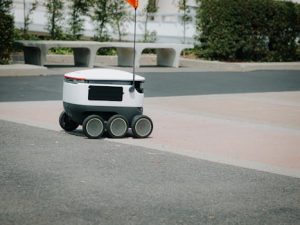The US Automotive Industry: Challenges and Opportunities in 2025.
As the year 2025 approaches, the automotive industry in the United States is facing a pivotal point. With the rise of technologies such as electric and autonomous vehicles, the traditional players in the market are challenged to adapt and stay competitive. At the same time, new players are entering the arena, bringing along new ideas and approaches. In this article, we will explore the current challenges the US automotive industry is facing and the opportunities that lie ahead in the year 2025.
The Shift towards Electric and Autonomous Vehicles
In recent years, there has been a significant shift towards electric and autonomous vehicles in the US automotive market. This trend is driven by concerns over emissions and the push for sustainable solutions. As a result, major players in the industry, such as General Motors and Ford, have announced plans to shift their focus towards electric and autonomous vehicles. While this move is essential for the industry’s future, it also presents a significant challenge in terms of the necessary investments and technological advancements.
Challenges Facing the Transition to Electric and Autonomous Vehicles
One of the main challenges facing the shift towards electric and autonomous vehicles is the cost. These vehicles require advanced technology and expensive components, making them more costly to produce than traditional vehicles. This higher cost means that manufacturers must find ways to reduce prices to make their products more accessible to consumers.
Another challenge is the infrastructure needed to support these vehicles. Electric vehicles require a network of charging stations, which currently is not widespread in the US. The development of these charging stations is a significant undertaking that requires coordination among different stakeholders, such as government bodies, utility companies, and automotive manufacturers. Similarly, autonomous vehicles require advanced infrastructure and technology to function safely and efficiently, which poses a significant challenge in terms of investment and collaboration among various industries.
Opportunities for Growth
Despite the challenges, the shift towards electric and autonomous vehicles also presents numerous opportunities for growth in the US automotive industry. Firstly, with the growing concern over emissions, there is a high demand for environmentally friendly vehicles. This demand creates an opportunity for manufacturers who can offer affordable and sustainable options to attract and retain customers.
Moreover, the transition to electric and autonomous vehicles also opens up new markets for suppliers, especially in the development of advanced technologies. As automotive manufacturers shift their focus towards electric and autonomous vehicles, they need to partner with suppliers who can provide them with the necessary components and systems. This creates opportunities for smaller or new companies to enter the market and establish themselves as key players.
The Rise of New Technologies
Aside from electric and autonomous vehicles, new technologies are continuously emerging in the US automotive industry. These technologies, such as artificial intelligence and connected cars, are adding another layer of complexity and challenges for traditional players in the market.
Challenges in Adopting New Technologies
The main challenge facing the adoption of new technologies is the rate at which they evolve. With the rapid pace of technological advancements, automotive manufacturers must continuously invest in research and development to stay ahead. This investment requires significant resources and can be a strain on traditional manufacturers who are already facing financial challenges.
Moreover, the integration of these technologies in vehicles also poses challenges in terms of safety and cybersecurity. As vehicles become more connected, they are also more vulnerable to cyber-attacks. Manufacturers must invest in measures to ensure the safety and security of their vehicles, which can be costly and time-consuming.
Future Opportunities
The rise of new technologies also brings along opportunities for growth and innovation in the US automotive industry. With the development of cutting-edge technologies, there is a potential to improve vehicle performance, safety, and customer experience. Manufacturers who can effectively integrate and utilize these technologies in their products will have a competitive advantage in the future market.
The Importance of Collaboration and Partnerships
As the US automotive industry faces the challenges and opportunities of the year 2025, collaboration and partnerships will be crucial for its success. With the complexity of new technologies and the shift towards electric and autonomous vehicles, manufacturers must work together with suppliers, government bodies, and other industries to overcome challenges and seize opportunities.
Collaboration can also lead to cost savings and the sharing of resources, which can be beneficial for manufacturers who are facing financial constraints. Partnerships can also facilitate the exchange of knowledge and expertise, helping manufacturers stay ahead in the ever-changing market.
Conclusion
In conclusion, the US automotive industry is facing significant challenges as it looks towards the year 2025. However, these challenges also present opportunities for growth and innovation. With the rise of electric and autonomous vehicles and new technologies, collaboration and partnerships will be crucial for manufacturers to stay competitive and succeed in the future market.




